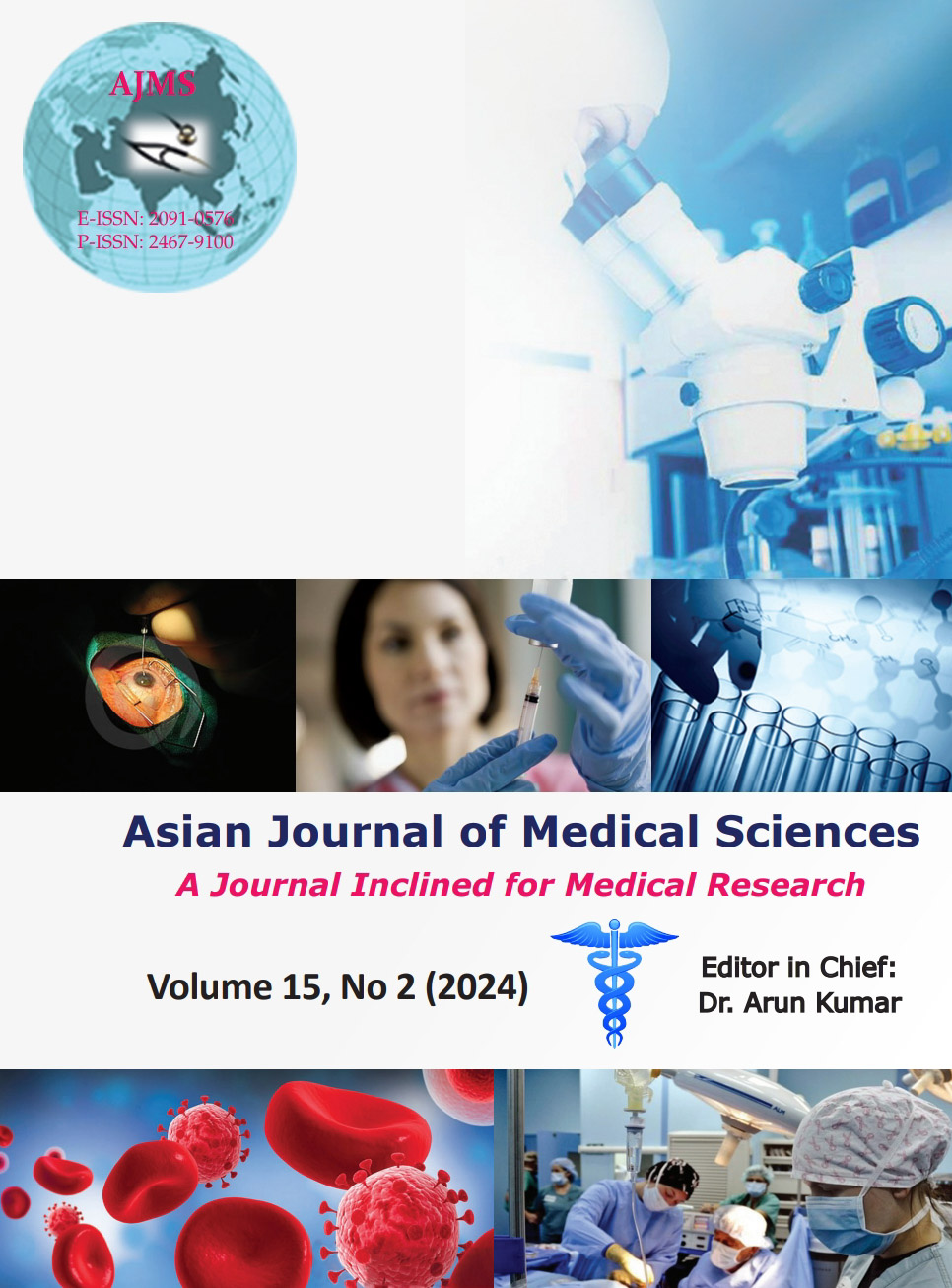Surgical outcomes of neoadjuvant chemoradiotherapy versus neoadjuvant chemotherapy in patients of locally advanced carcinoma of esophagus: A prospective cross-sectional comparative study
Keywords:
Esophageal carcinoma; Neoadjuvant; Chemoradiotherapy; Chemotherapy; Paclitaxel; CarboplatinAbstract
Background: Neoadjuvant chemoradiotherapy + radiotherapy (NACT+RT) or neoadjuvant chemotherapy (NACT) has been shown to improve survival in locally advanced esophageal carcinoma (EC). Comparative evaluation of NACT+RT versus NACT is ambiguous.
Aims and Objectives: The current study was designed to evaluate the outcomes of NACT+RT versus NACT in locally advanced EC.
Materials and Methods: In this prospective cross-sectional study, patients with operable, non-metastatic squamous cell carcinoma, and adenocarcinoma of the mid and lower esophagus (T3–T4a) were treated with NACT (paclitaxel 175 mg/m2 plus carboplatin 5 Area under curve (AUC) every 3 weeks) or NACT+RT (NACT with 45 Gy in 25 fractions over 5 weeks). Response, R0 resections, post-operative complications, and recurrence were comparatively evaluated.
Results: Of 40 enrolled patients, 20 received NACT and 20 received NACT+RT. In the NACT arm, 50% of patients had a partial response and 20% had disease progression. In the NACT+RT arm, 10% of patients had disease progression whereas 25% of patients had complete pathological response. Transhiatal esophagectomy was performed in 60% of patients in the NACT arm, whereas in the NACT+RT arm, 80% of patients had three-stage esophagectomy. The average surgery duration was numerically greater for the NACT+RT arm; blood loss was also greater. Pulmonary complications and anastomotic leak rate were higher in NACT+RT arm whereas other complications such as hoarseness of voice, and wound dehiscence were higher in the NACT arm.
Conclusion: NACT+RT had better partial and complete response rates and low recurrence rates versus NACT. Post-operative complications were higher in the NACT+RT, especially pulmonary complications and anastomotic leak. Further, large-scale studies are warranted to confirm the efficacy of NACT versus NACT+RT in EC.
Downloads
Downloads
Published
How to Cite
Issue
Section
License
Copyright (c) 2023 Asian Journal of Medical Sciences

This work is licensed under a Creative Commons Attribution-NonCommercial 4.0 International License.
Authors who publish with this journal agree to the following terms:
- The journal holds copyright and publishes the work under a Creative Commons CC-BY-NC license that permits use, distribution and reprduction in any medium, provided the original work is properly cited and is not used for commercial purposes. The journal should be recognised as the original publisher of this work.
- Authors are able to enter into separate, additional contractual arrangements for the non-exclusive distribution of the journal's published version of the work (e.g., post it to an institutional repository or publish it in a book), with an acknowledgement of its initial publication in this journal.
- Authors are permitted and encouraged to post their work online (e.g., in institutional repositories or on their website) prior to and during the submission process, as it can lead to productive exchanges, as well as earlier and greater citation of published work (See The Effect of Open Access).




